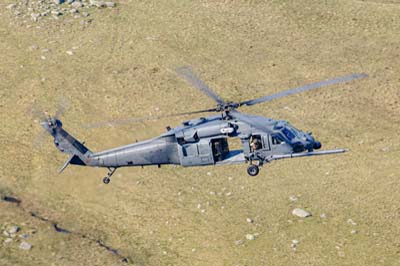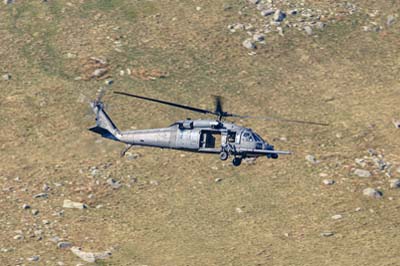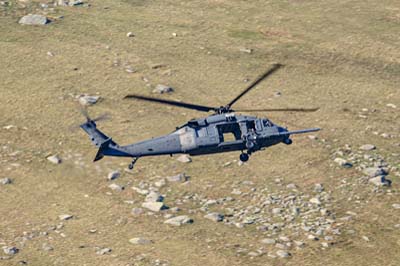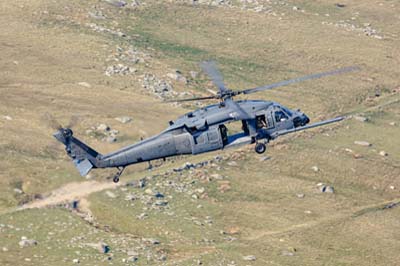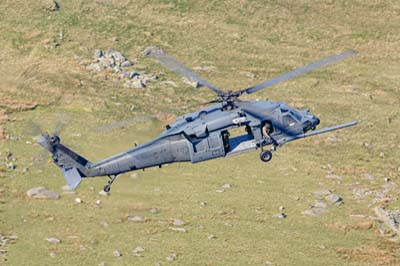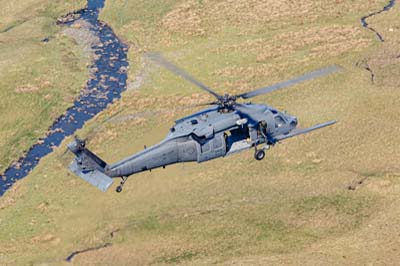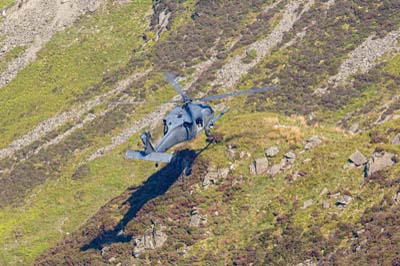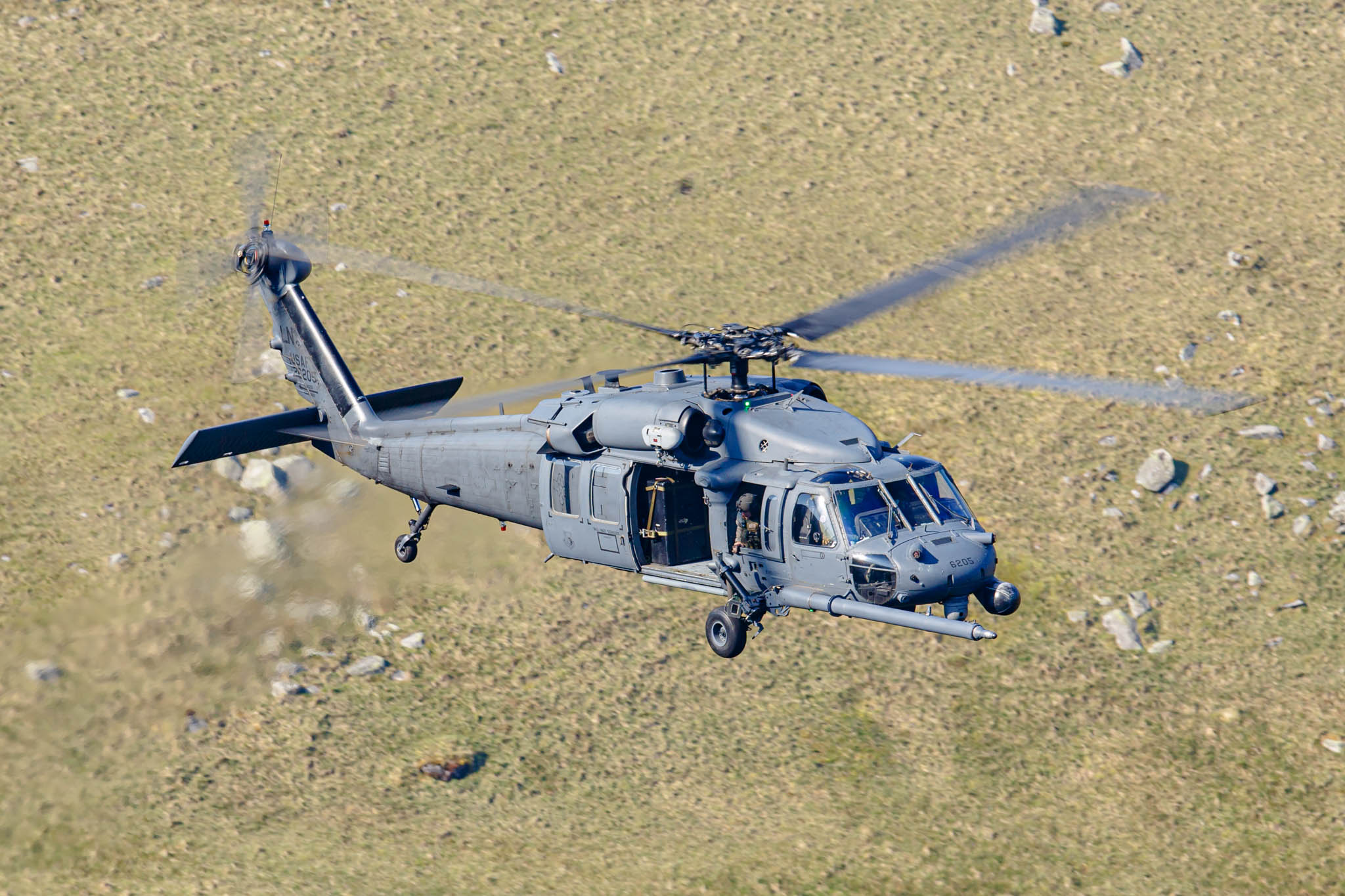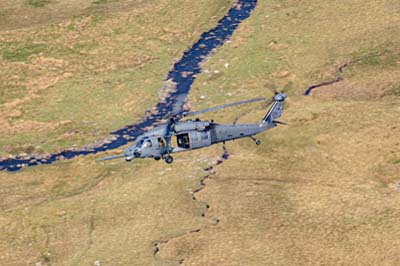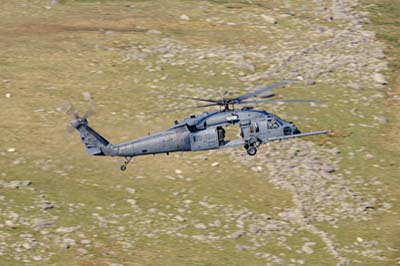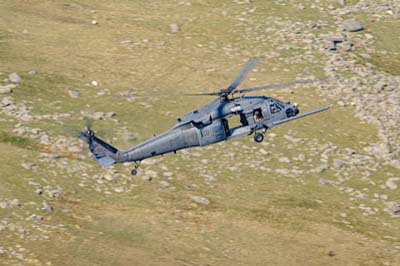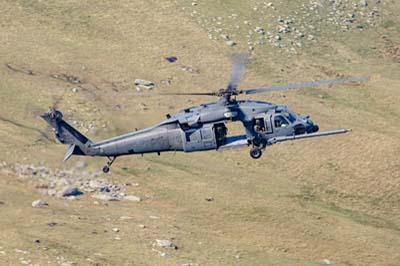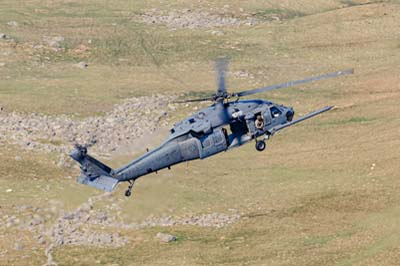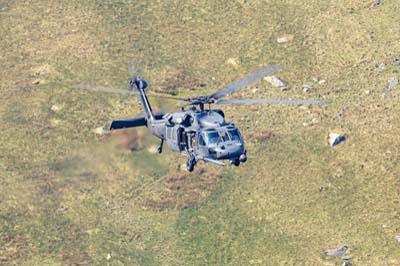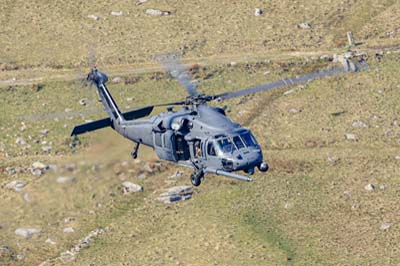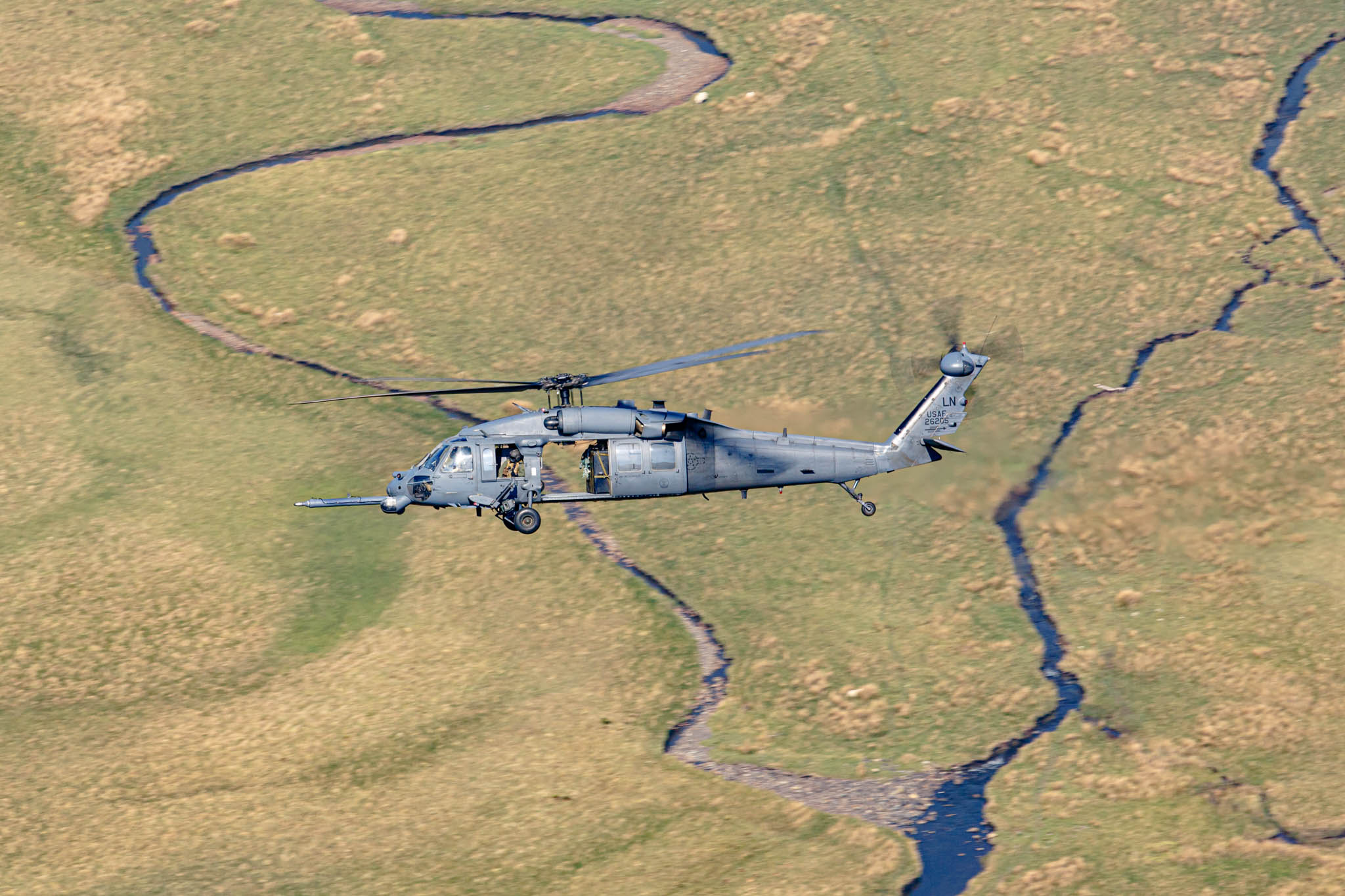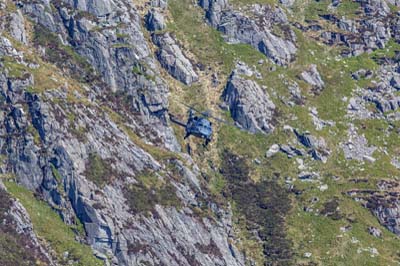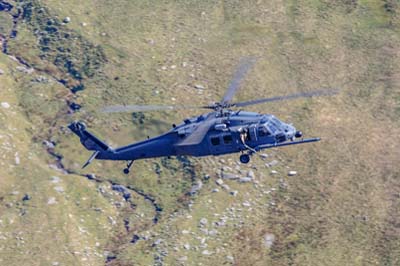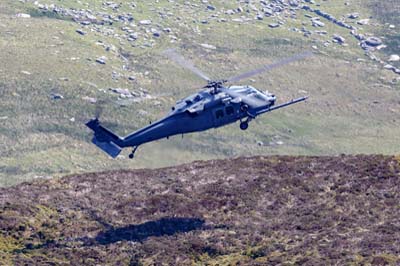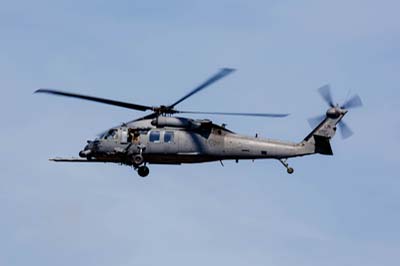Military Low-Flying Training
Snowdonia Rotary MFTA
Lakenheath's HH-60G Pave Hawks
May 2012
|
Mountain flying training in the Snowdonia Rotary - Mountain Flying Training Area (MFTA)
The U.S. Air Forces 56th Rescue Squadron (56 RQS) have been operating five Sikorsky HH-60G Pave Hawk helicopters from RAF Lakenheath since 2006. Their primary mission is the recovery of personnel day or night from hostile environments during war also including medical evacuations (MEDEVAC) missions under low visibility, low illumination conditions at all altitudes.
In September 2011 56 RQS returned from nine months of operations in Afghanistan under Operation Enduring Freedom and almost immediately were transferred to US Navy and Royal Navy ships off the Libyan coast to conduct personnel recovery operations in support of Operations Odyssey Dawn and Unified Protector.
In May 2012, to help maintain their combat readiness, three 56 RQS Pave Hawks were deployed to RAF Valley Anglesey in Wales for a week of mountain flying training operations in Snowdonia. The area is very mountainous with numerous peaks above 3,000 feet (914m). There are also dedicated helicopter training areas away from the low-level routes used by fast jets named 'Zulu',' Yankee' etc at least five distinct areas are marked on pilot's maps. The Pave Hawks training consisted of several approaches to a potential landing spot (see below photographed in 'Whiskey' area) and after the fifth or sixth approach they would usually land. These approaches and landings would be made either high on a mountain side or low down in a valley. On other occasions they would rest their main wheels only on an impossibly small outcrops and hold position with just the main wheels on the ground.
The Pave Hawk features an upgraded communications and navigation suite that includes integrated inertial navigation/global positioning/Doppler navigation systems, satellite communications, secure voice and Have Quick communications. All HH-60Gs have an automatic flight control system, night-vision goggles with lighting and forward looking infrared system for night low-level operations. Additionally, Pave Hawks have colour weather radar and an engine/rotor blade anti-ice system that gives the HH-60G an adverse weather capability. Mission equipment includes a retractable in-flight refuelling probe, internal auxiliary fuel tanks, two crew-served 7.62mm or .50 calibre machine guns. |
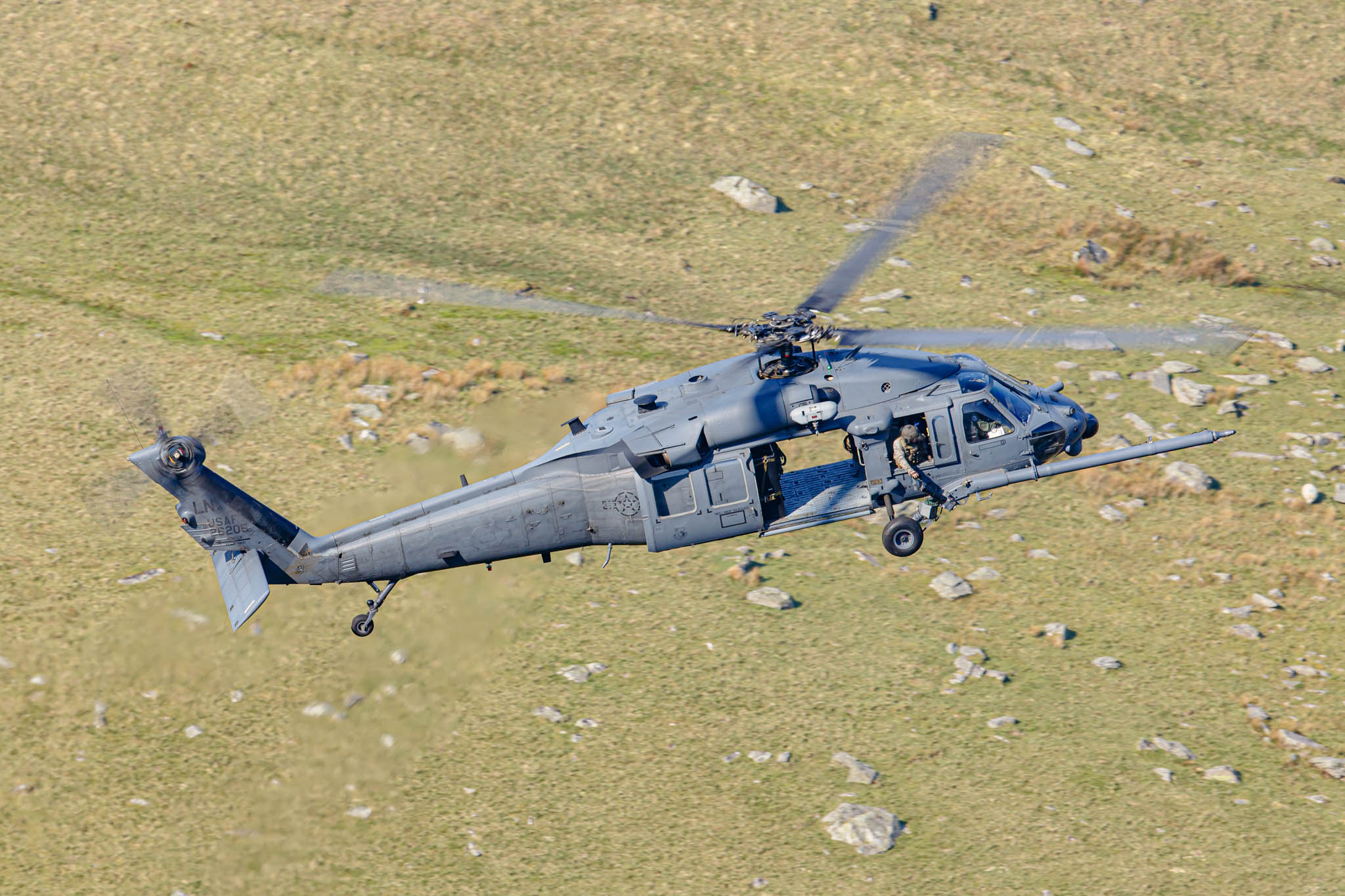 |
| Sikorsky HH-60G Pave Hawk (88-26205 'LN') helicopter of 56th Rescue Squadron (56 RQS) based at RAF Lakenheath during mountain training in Snowdonia, all members of the crew are resposible for assisting the pilot in these challenging flying conditions. |
| Left to right: HH-60G Pave Hawk helicopter (88-26205 'LN') of 56th Rescue Squadron (56 RQS) during an afternoon sortie. |
| Left to right: HH-60G Pave Hawk helicopter (88-26205 'LN') of 56th Rescue Squadron (56 RQS) appraoches a small outcrop only large enough to rest the main under carriage. It maintains this position for a minute or two before pulling away. |
| Sikorsky HH-60G Pave Hawk (88-26205 'LN') helicopter of 56th Rescue Squadron (56 RQS) based at RAF Lakenheath during mountain training in Snowdonia. |
| Left to right: HH-60G Pave Hawk helicopter (88-26205 'LN') of 56th Rescue Squadron (56 RQS). |
| Left to right: HH-60G Pave Hawk helicopter (88-26205 'LN') of 56th Rescue Squadron (56 RQS). |
| Sikorsky HH-60G Pave Hawk (88-26205 'LN') helicopter of 56th Rescue Squadron (56 RQS) in a remote Snowdonia valley. |
| Left to right: HH-60G Pave Hawk helicopter (88-26206 'LN') of 56th Rescue Squadron (56 RQS) and touching down on a mountain ledge. |

